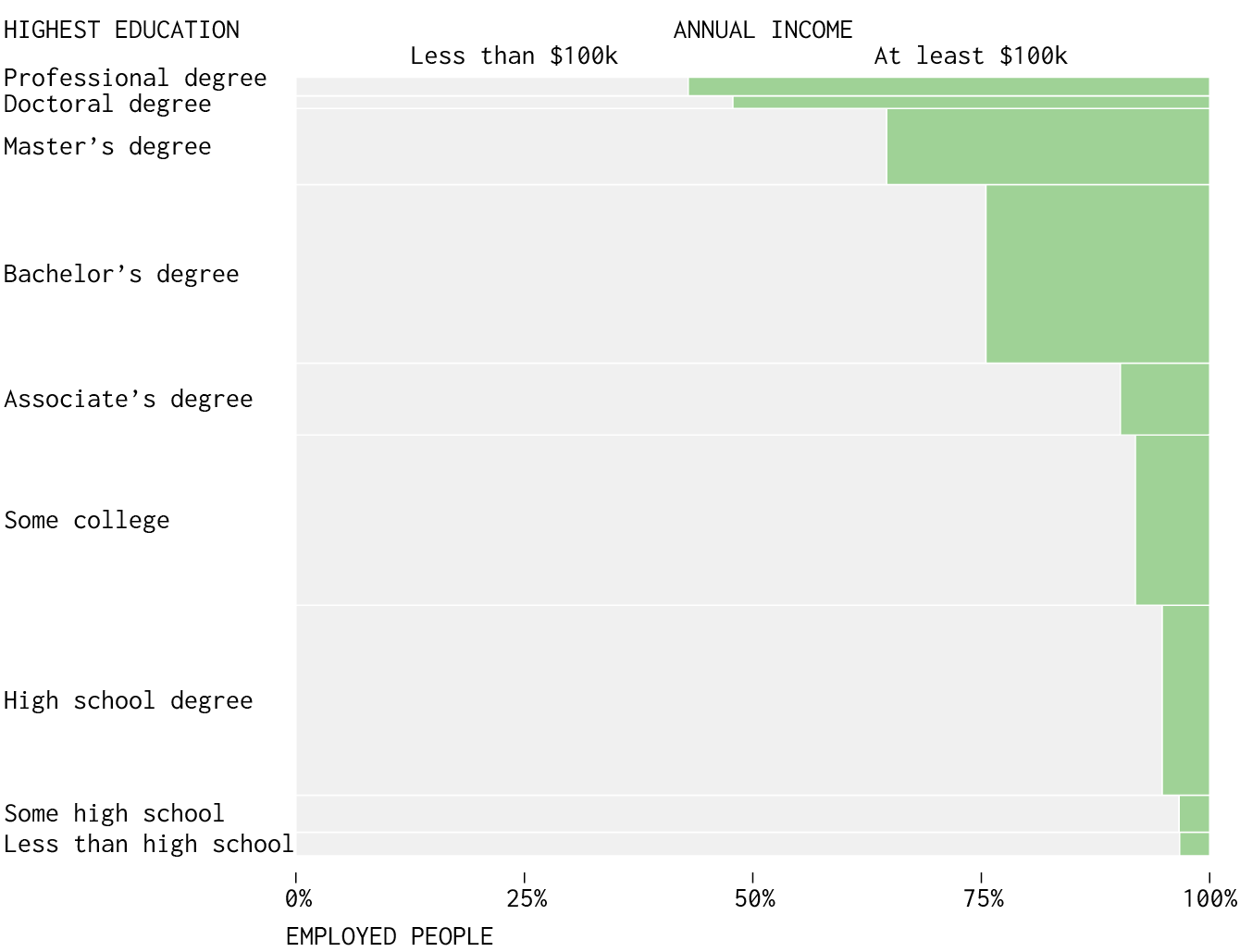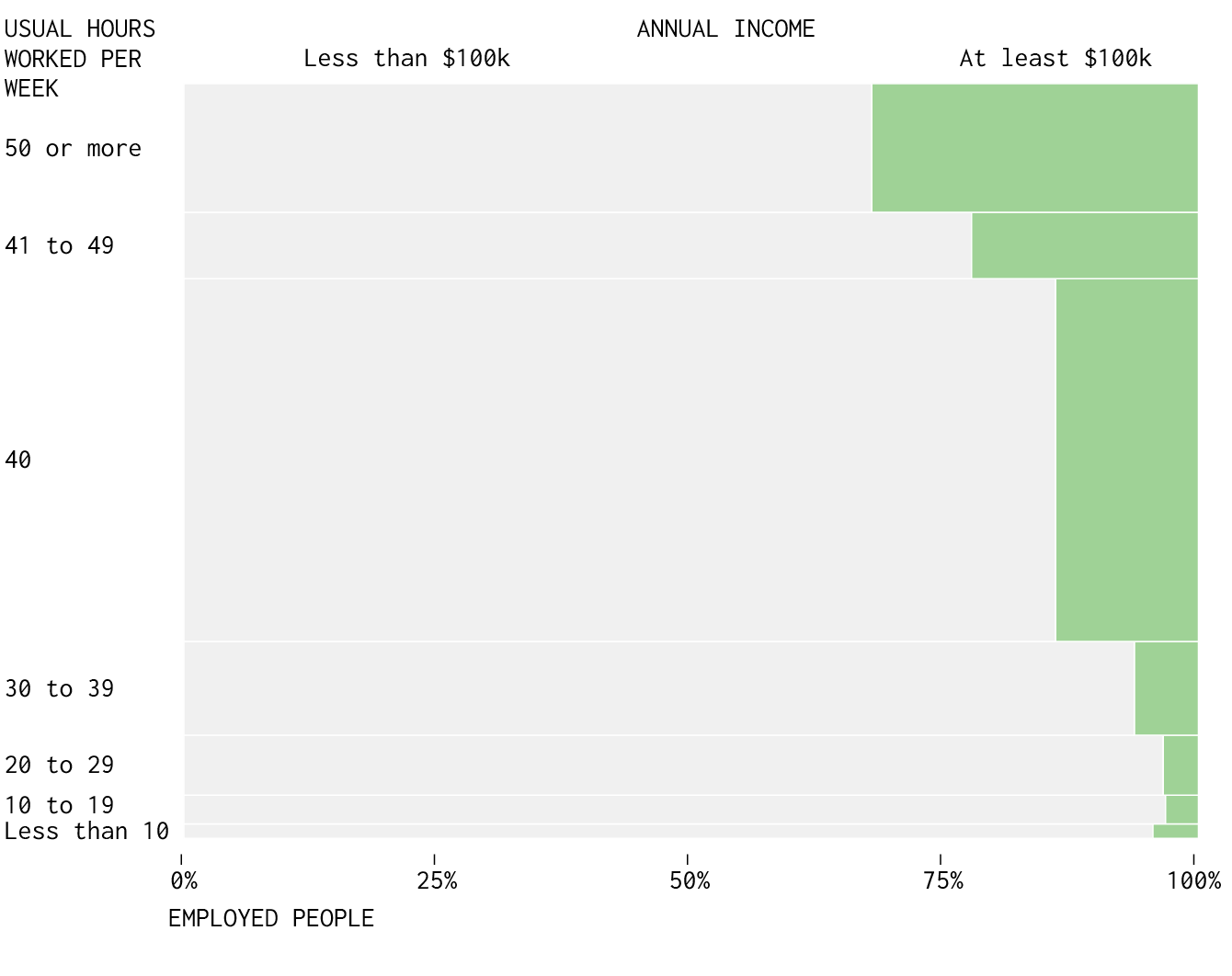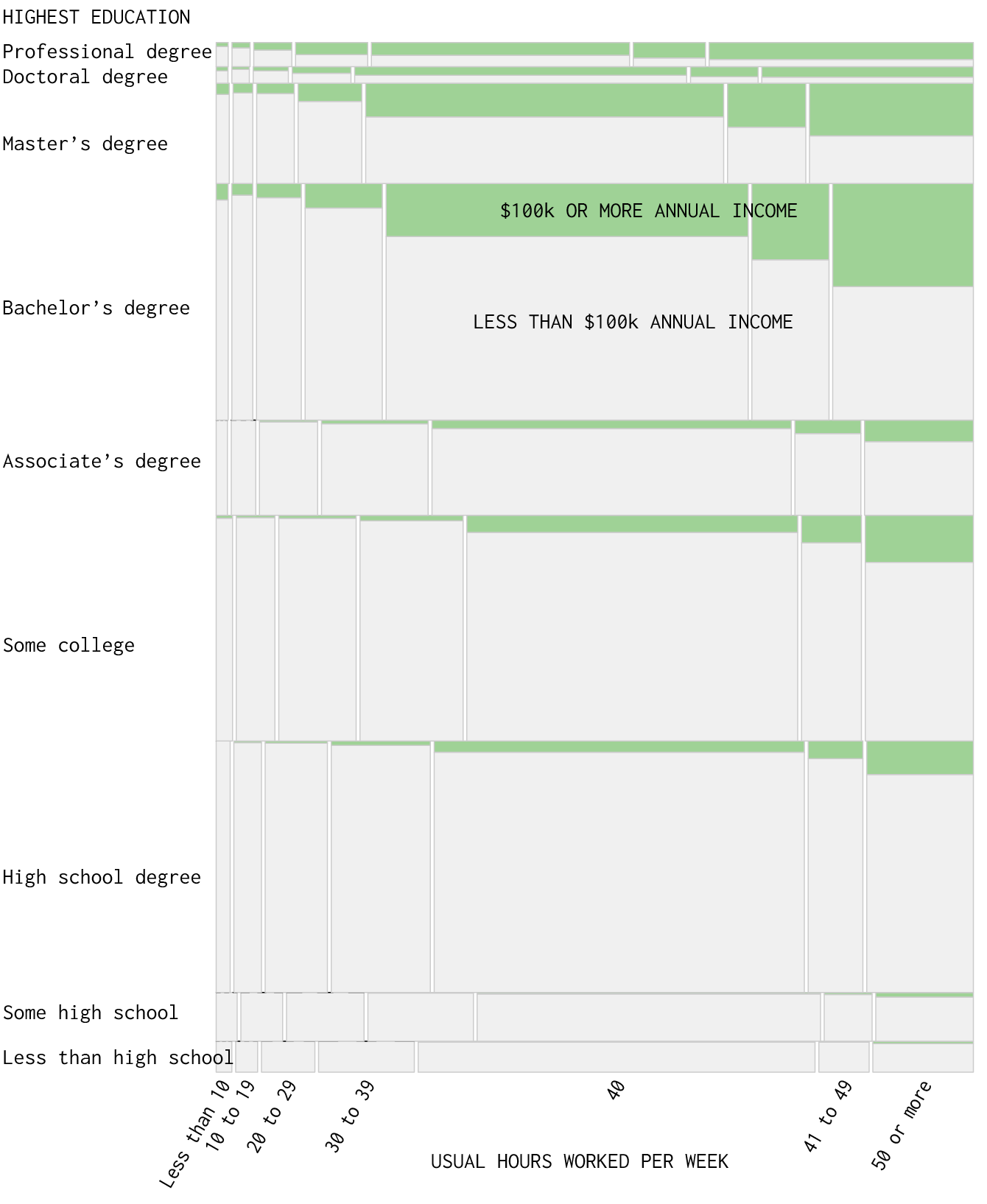Jobs with Higher Income and Fewer Hours
About 15% of working Americans make at least $100,000 of income per year as of the 2021 American Community Survey. As you’d expect, many who fall in that 15% spent more years in school and spend more hours at work.
But you can also earn a six-figure income without working all the time. What about those people? What do they do?
Education and Income
Just looking at the working population overall, it seems fair to say that education level is tied to income. Over half of those with a doctorate or professional degree — think physicians, lawyers, and professors — earn over $100,000. (I suspect the percentage would be higher if the data split out medical residents.)
Six-figures grows more rare with less education but it’s certainly not impossible.

Weekly Hours and Income
Sometimes it’s not about the degrees you have and more about the work you put in. Those who work more hours tend to earn more, but that might be an indicator for the types of jobs those people work. Higher income jobs likely lead to more responsibility and more hours.

Education, Weekly Hours, and Income
When you look at education and hours worked together, you see that longer hours are more common with higher degrees in the top right corner. Less education and less than full-time hours with a six-figure salary? It’s rare, but again, not impossible. These are mostly manager-type occupations or people who run their own businesses.

Jobs, Fewer Hours, and Income
Since less education and higher salary isn’t very likely, let’s look at the jobs of those who work less than forty hours per week. These are the 50 most common sorted by percentage earning at least $100,000.

I can’t say there are any surprises in there. Although what is a management analyst? There are quite a few of them who do well.
Otherwise, the best chances rest in working and learning. But send me a message if you know an easy out that doesn’t require winning the lottery.
Become a member. Support an independent site. Make great charts.
See What You GetFlowingData is made possible by supporting members. Since 2007, I, Nathan Yau, a real person, have been analyzing and visualizing data to help more people understand and appreciate it in their everyday lives.
If you liked this or want to make similar data things, please consider supporting this small corner of the internet. You get unlimited access to visualization courses, tutorials, and extra resources. Thanks. — Nathan



